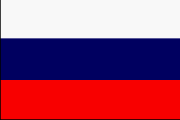





Two versions of the D-6 launch system for solid-fuel missiles studied by OKB-7 (KB Arsenal) in Leningrad between 1958 and 1960. One used missile with a single large diameter motor using propellants that were already in production for use in unguided tactical rockets. The second version focused on a new missile incorporating new solid propellants using a crystal oxidizer and fuel, with the first and second stages consisting of clusters of four separate rocket motors. The overall dimensions of either missile would have been too large for a launching tube inside the pressure hull, so the D-6 launcher design called for two tubes on each side of the outside of the hull. To fire the missiles the submarine would surface and the tubes would be turned into a vertical position. The preliminary design of the launch system was completed in 1960. The beginning of detailed design development of the D-6 complex was directed on 18 June 1960, but on 04 June 1961 the program was cancelled.
Specifications |
||
|
DIA |
||
|
NATO |
||
|
Bilateral |
||
|
Service |
||
|
OKB/Industry |
||
|
Design Bureau |
OKB-7 (KB Arsenal) |
|
|
Approved |
||
|
Years of R&D |
||
|
Engineering and Testing |
||
|
First Flight Test |
none |
|
|
IOC |
||
|
Deployment Date |
Not deployed |
|
|
Launch system |
D-6 |
|
|
Submarine |
||
|
Type of Warhead |
Single |
|
|
Warheads |
1 |
|
|
Yield (mt) |
||
|
Payload (t) |
||
|
Total length (m) |
||
|
Total length w/o warhead (m) |
||
|
Missile Diameter (m) |
||
|
Launch Weight (t) |
||
|
Fuel Weight (t) |
||
|
Range (km) |
||
|
CEP (m) (Russian Sources) |
||
|
CEP (m) Western Sources) |
||
|
Number of Stages |
2 |
|
|
Booster guidance system |
Inertial autonomous |
|
|
1st stage |
2nd stage |
|
|
Length (m) |
||
|
Body diameter (m) |
||
|
Fueled weight (t) |
||
|
Dry weight (t) |
||
|
Engine Designation |
||
|
Propellants |
Solid |
Solid |
|
Fuel |
||
|
Oxidizer |
||
|
Burning time (s) |
||
|
Verniers Thrust Sea Level/Vacuum (kn) |
||
|
Specific Impulse (s) |
||
|
Launching Technique |
Surface launch |
|
|
Firing condition |
|
|
